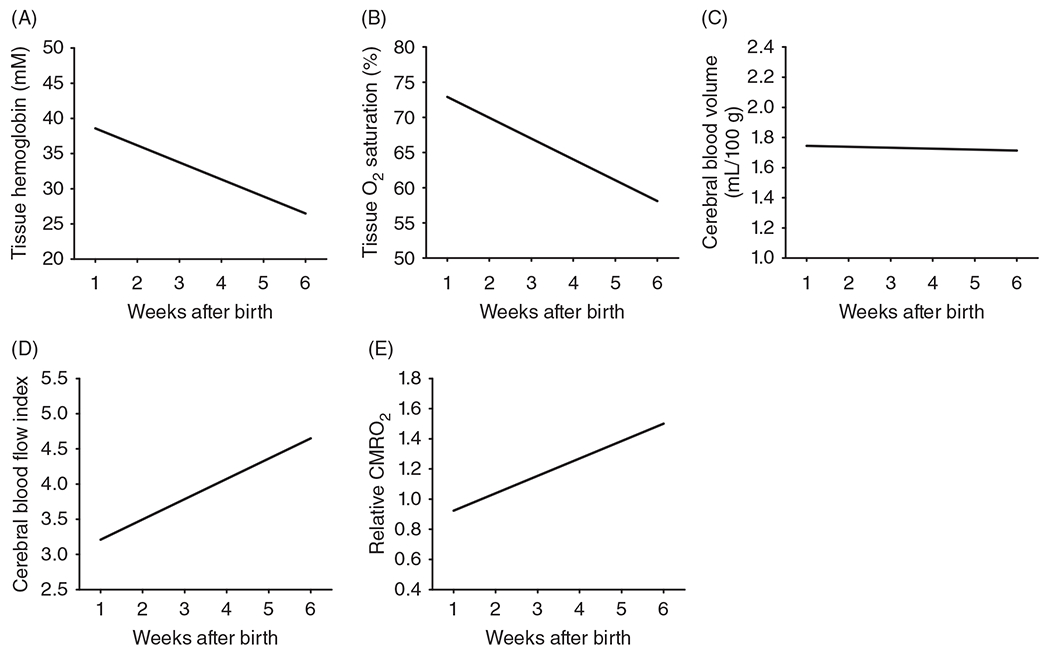Figure 7.

Postnatal increases in cerebral blood flow are coupled to postnatal increases in cerebral metabolic rate of O2 (CMRO2) as determined by advance near-infrared spectroscopy (NIRS) modalities in prematurely born neonates over the first 6 weeks after birth. Noninvasive NIRS-based optical measures of tissue hemoglobin concentration (A), tissue O2 saturation (B), cerebral blood volume (C), a cerebral blood flow index (D), and relative CMRO2 determined with frequency domain NIRS plus diffuse correlation spectroscopy are expressed relative to the group average in human premature neonates born at 25 to 33 weeks PMA brains. The decreases in tissue hemoglobin concentration and tissue oxyhemoglobin saturation without an accompanying decrease in cerebral blood volume are attributed to a postnatal decrease in systemic hematocrit as high-O2 affinity fetal hemoglobin-containing red blood cells are cleared faster than low-O2 affinity adult hemoglobin-containing red blood cells are produced. Lines are linear regressions that were all statistically significant versus age, except for cerebral blood volume. Source: Reused, with permission, from Roche-Labarbe N, et al., 2010 (379).
